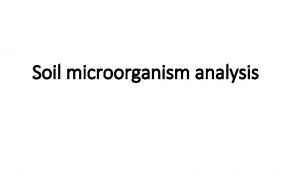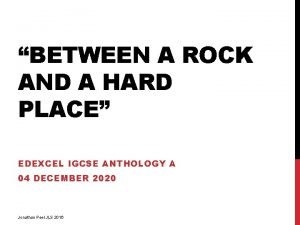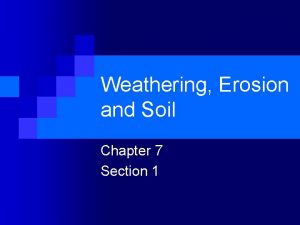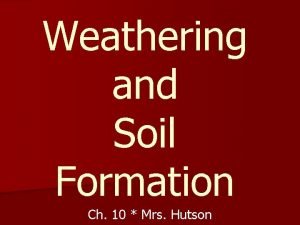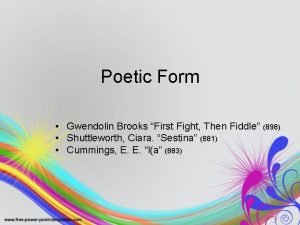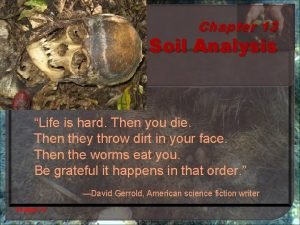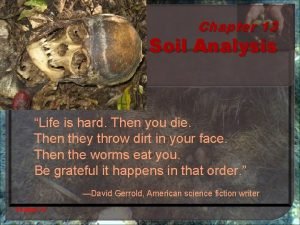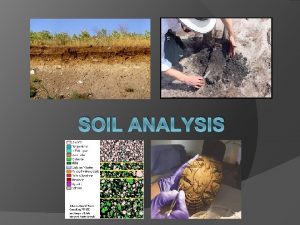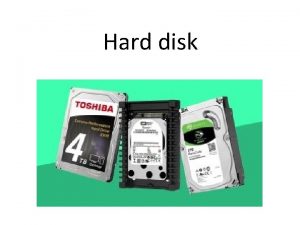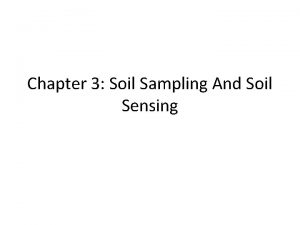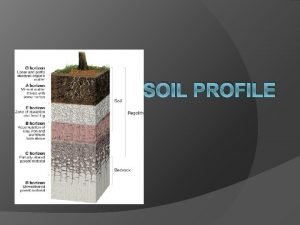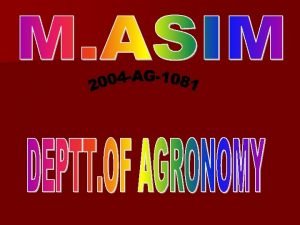Chapter 13 Soil Analysis Life is hard Then























- Slides: 23

Chapter 13 Soil Analysis “Life is hard. Then you die. Then they throw dirt in your face. Then the worms eat you. Be grateful it happens in that order. ” —David Gerrold, American science fiction writer

Forensic Geology The legal application of earth and soil science Characterization of earthen materials that have been transferred between objects or locations and the analysis of possible origin or sources Kendall/Hunt Publishing Company 2

Forensic Geologist Tools Binocular microscopes Petrographic microscopes X-ray diffraction Scanning electron microscopes Microchemical analysis Kendall/Hunt Publishing Company 3

Forensic Geology History 1887– 1893—Sir Arthur Conan Doyle wrote about scientific ideas and techniques for solving crimes in his writings of Sherlock Holmes. This included information about soil and its composition which had never actually been used. 1893—An Austrian criminal investigator, Hans Gross, wrote that there should be a study of “dust, dirt on shoes and spots on cloth. ” He observed, “Dirt on shoes can often tell us more about where the wearer of those shoes had last been than toilsome inquiries. ” Kendall/Hunt Publishing Company 4

History 1904—Georg Popp, a German forensic scientist, presented the first example of earth materials used as evidence in a criminal case, the strangulation of Eva Disch. 1910—Edmond Locard, a forensic geologist, was most interested in the fact that dust was transferred from the crime scene to the criminal. This helped to establish his principle of transfer. Kendall/Hunt Publishing Company 5

Soil • Definition—naturally deposited materials that cover the earth’s surface and are capable of supporting plant growth • The Earth 75%—oceans, seas and lakes 15%—deserts, polar ice caps and mountains 10%—suitable for agriculture Kendall/Hunt Publishing Company 6

Soil A. Formation Living matter—plants, animals, microorganisms Inorganic materials Climate Parent materials Relief—slope and land form Time Kendall/Hunt Publishing Company 7

Soil A. Profile Topsoil Subsoil Parent material A. Composition Sand Silt Clay Organic matter Kendall/Hunt Publishing Company 8

Soil A. Nutrients—macro Nitrogen Phosphorus Potassium Calcium Magnesium Sulfur A. Nutrients—micro Manganese Iron Boron Copper Zinc Molybdenum Chlorine Kendall/Hunt Publishing Company 9

Soil Comparisons May establish a relationship or link to the crime, the victim, or the suspect(s) Physical properties—density, magnetism, particle size, mineralogy Chemical properties—p. H, trace elements Kendall/Hunt Publishing Company 10

Probative Value of Soil Types of earth material are virtually unlimited. They have a wide distribution and change over short distances. As a result, the statistical probability of a given sample having properties the same as another is very small Evidential value of soil can be excellent Kendall/Hunt Publishing Company 11

Increasing Probative Value Rare or unusual minerals Rocks Fossils Manufactured particles Kendall/Hunt Publishing Company 12

Minerals More than 2000 have been identified Twenty or so are commonly found in soils; most soil samples contain only 3 to 5 Characteristics for identification—size, density, color, luster, fracture, streak, or magnetism Kendall/Hunt Publishing Company 13

Rocks Aggregates of minerals Types Natural—like granite Man-made—like concrete Formation Igneous Sedimentary Metamorphic Kendall/Hunt Publishing Company 14

Fossils Remains of plants and animals May help geologists to determine the age of rocks Some are scarce and can be used to identify regions or locations Kendall/Hunt Publishing Company 15

Palynology The study of pollen and spores Important to know: What is produced in a given area The dispersal pattern Variation in size and weight For additional information about palynology visit: http: //science. uniserve. edu. au/faces/milne. html Kendall/Hunt Publishing Company 16

Soil Evidence Class characteristics—the type of soil may have similar characteristics at the primary and/or secondary crime scene, on the suspect or on the victim Individual characteristics—only if the soil has an unusual or specialized ingredient such as pollen, seeds, vegetation, or fragments. Kendall/Hunt Publishing Company 17

Sand is the term applied to natural particles with a grain diameter between 1/16 mm and 2 mm. Its color and contents are dependent upon the parent rock and surrounding plant and animal life. Kendall/Hunt Publishing Company 18

Sand Characteristics Composition is based on the material of the source; also gives the sand its color Texture is determined by the way the source was transported Shape Grain size Sorting Kendall/Hunt Publishing Company 19

Sand Types Continental sands—formed from weathered continental rock, usually granite Ocean floor sands—formed from volcanic material, usually basalt Carbonate sands—composed of various forms of calcium carbonate Tufa sands—formed when calcium ions from underground springs precipitate with carbonate ions in the salt water of a salt lake Kendall/Hunt Publishing Company 20

Sand Evidence “In every grain of sand is a story of earth. ” —Rachel Carson Class characteristics—the type of sand may have similar characteristics to the primary and/or secondary crime scene, on the suspect or on the victim Individual characteristics—only if the sand has an unusual ingredient or contaminant. Kendall/Hunt Publishing Company 21

Virtual Sand Lab Take a look at other examples on the website from the Geology Department at Pasadena City College. www. paccd. cc. ca. us/SAND/Sand. Exrc. htm Kendall/Hunt Publishing Company 22

Forensic Geology in the News A 9 -year-old’s body was found in a wooded area along a river in Lincoln County, South Dakota. A forensic geologist collected soil samples from the fenders of a suspect’s truck and the area where the body was found. Both soils contained grains of a blue mineral that turned out to be gahnite, a rare mineral that had never been reported in South Dakota. As a result, the soil tied the suspect to the crime. Check out other cases at: www. forensicgeology/science. htm Kendall/Hunt Publishing Company 23
 Living soil vs dead soil
Living soil vs dead soil Four major spheres of the earth
Four major spheres of the earth Hard soil evidence
Hard soil evidence Hard soil evidence
Hard soil evidence What makes hard water hard lab investigation 3 answers
What makes hard water hard lab investigation 3 answers Work hard have fun make history
Work hard have fun make history Hard times hard drive
Hard times hard drive What is sweetened then soured boiled then cooled
What is sweetened then soured boiled then cooled Healthy soil healthy life poster ideas
Healthy soil healthy life poster ideas Plfa soil test
Plfa soil test Apes soil lab answers
Apes soil lab answers Soil climate analysis network
Soil climate analysis network The life of a hard-working future king
The life of a hard-working future king Between a rock and a hard place igcse analysis
Between a rock and a hard place igcse analysis A hard frost poem
A hard frost poem Chapter 7 weathering erosion and soil
Chapter 7 weathering erosion and soil Chapter 10 weathering and soil formation answers
Chapter 10 weathering and soil formation answers First fight poem
First fight poem And then there were none literary devices
And then there were none literary devices A valediction forbidding mourning critical analysis
A valediction forbidding mourning critical analysis And then there were none introduction
And then there were none introduction Chapter 22 living in hard times
Chapter 22 living in hard times Ffa manual scavenger hunt answers
Ffa manual scavenger hunt answers Chapter 8 summary and then there were none
Chapter 8 summary and then there were none









